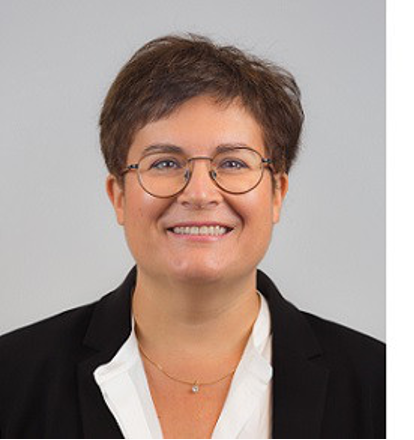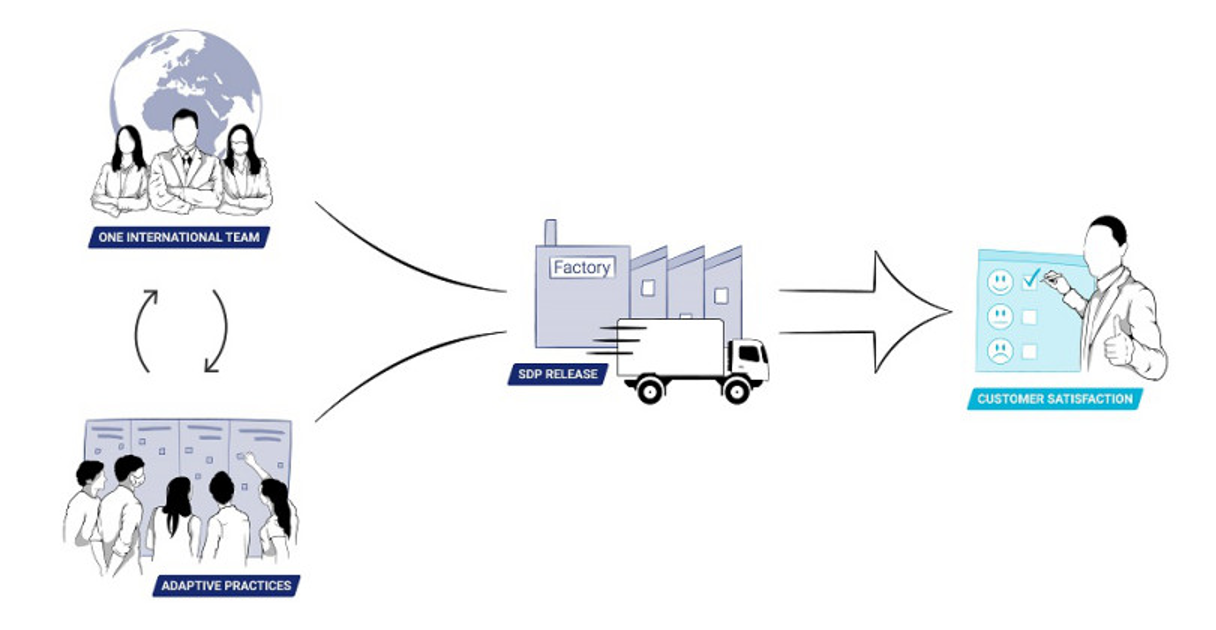Interview: how Agile organisation of the Smart Digital Platform brings maximum user satisfaction
By securing the continuity of critical services, Thales's Smart Digital Platform helps industries and organizations in charge of protecting people and property. The result of an international collaboration between PRS teams, the platform was designed according to the Agile development methodology with the support of the Thales digital factory.
But what is the Agile methodology? What is it and what makes it different? What are the effects on the teams concerned, on our customers, and on Thales? Christelle Housset explains everything to us!
The SDP platform was developed using an Agile approach. Can you explain in a few words what this methodology consists of?

CH : In a nutshell, it's about teams working together both among themselves and with users to produce results and feedback more quickly. Used primarily by startups, this entrepreneurial methodology has found its way into many global companies.
The needs of the end user are at the heart and the center of this methodology. The teams are working to produce MVPs (minimum viable products) in a relatively short timeframe, which allows rapid progress to the testing phase. This approach is based on continuous planning, learning and improvement, collaboration between teams and evolutionary development. It also encourages responsiveness to change.
This is quite different from the "classic" way of designing our products. Like many people in the industry, we are used to working according to a defined plan. The project takes place sequentially: the client only sees the final product at the last stage of the project and the final product is only tested at the end of the process. Finally, the developers and those doing the testing usually belong to different teams and perform their tasks with little or no interaction or coordination between them.
Can you tell us about your experience in this area within the framework of the SDP project?
For the SDP project, it all started in 2019 in our Thales Digital Factories with four teams located in Singapore, France, Mexico and Canada.
We learned through long brainstorming sessions to transform our usual way of organizing and structuring the process of developing a new project. Instead of being assigned clearly defined tasks, teams were called upon to solve problems collaboratively. More latitude was given to the teams to organize their work, which implied a good dose of trust and respect between the teams and the project managers. Cultural differences also had to be taken into account and respected.
In short, for me that means less management and more autonomy for the teams.

What role did the Digital Factory play in the SDP project?
The Digital Factory was the main driver of this new way of working together. Coaching sessions and disruptive methodologies forced us to think outside the established framework and approach collaboration from a different perspective. The availability of easy-to-use digital tools that can be accessed anywhere is a sine qua non for smooth collaboration and teamwork, especially in this international setting. With a Digital Factory on each continent, it was easy to support each team through the Regional Factories.
Why do you develop the SDP platform in this way?
What mattered above all was to have brought in teams from different countries of the world from the start of the project. Therefore, the SDP platform is neither French, Mexican, Canadian nor Singaporean, but a global Thales solution. In other words, we avoid designing similar products simultaneously in different parts of the world, which incurs costs. We have a common demo platform, which covers multi-segment use cases. The expertise of our colleagues has been extremely valuable: our Mexican and Singaporean teams, for example, have extensive experience in working with municipal authorities, which is a valuable asset. Today the platform can meet the needs of various civil and public institutions such as cities, airports, special events, ports and industrial, religious or military sites.
The Agile method also helps speed time to market. Early testing and customer involvement from the development phase ensures that the final solution will meet user needs.
So, in your opinion, is it essential to continue to develop Agile skills applied to projects?
The wave of digital transformation sweeping across major industries has made speed and flexibility more imperative than ever. Our clients realize that technological innovation will revolutionize their world; they are therefore looking for ways that allow them to adapt at the same pace.
For Thales, this opens up tremendous opportunities. I am convinced that combining our recognized know-how as a leading systems integrator on the one hand, and our new digital skills and flexible structures on the other, is the way to make the most of both worlds.


